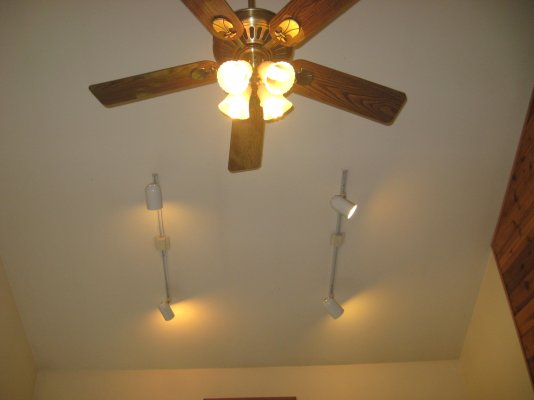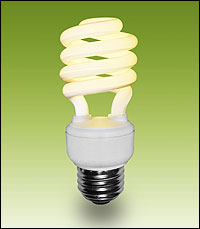Webzter
Full time employment: Posting here.
- Joined
- Jun 29, 2007
- Messages
- 567
Dang newfangled things!
Just remember, change isn't always good or for the better!


Dang newfangled things!


Just remember, change isn't always good or for the better!

 I am trying and did just get my first smartphone (an iPhone) which is OK.
I am trying and did just get my first smartphone (an iPhone) which is OK.I got theseHopefully I can find something that will provide equally bright light in a newfangled bulb. So far the 75 watt equivalent 1120 lumen bulb that I bought for a lamp (to try it) isn't terrible, but it is pretty yellowish and not very bright.
I got these
Amazon.com: Full Spectrum Light Bulb - ALZO 27W Compact Fluorescent - Case of 4 - Daylight Balanced 5500K - Pure White Light: Home Improvement
last summer, 4 for $21.47, and I think they are great for reading (maybe too bright for some people):
Product Specifications
Part Number:1069-55-04-FS Weight:3 Pounds Shape:SpiralBulb DetailsType of Bulb:Compact Fluorescent Light (CFL) Base Type:E26 Luminous Flux:1300 lm Wattage:27 watts Incandescent equivalent:100 watts Color Temperature:5500 Kelvin Color Rendering Index (CRI):91 Average Life:10000 hours Bulb Diameter:2.50 inches Bulb Length:6.5 inches
The first Amazon review is informative. Note the warning about taking a large socket.

Whoa, I think you need to get one of these types:Right now, I have a recessed light in the ceiling right over my favorite reading chair and it is usually the only light on in the house.

I have some that I bought for $16 when they first came out, and they are still going strong on our ceiling fan (10 years now).the cheapie CFL's are the ones that don't last very long. Anybody here have experience with buying the brand name expensive CFL's? Do they indeed last a lot longer than incandescent bulbs and cheapie CFL's?

So true! What worries me is that it might be a little harder to read without incandescent bulbs, and I already have difficulties with aging vision.
.........As an aside, DWs uncle is a professional photographer. He uses CFL spots in his softboxes precisely because they don't provide good great contrast. That means they tend to smooth over wrinkles and make people look younger.
 Sounds like I have some good alternatives for reading.
Sounds like I have some good alternatives for reading.I think I'll put CFLs in my over the medicine cabinet mirror.
I've not had very good luck with the life span on these CFL's and note that several other people here have also been disappointed with CFL's in this regard. Seems like the initial high cost vs extended life doesn't hold water but then I read elsewhere that the cheapie CFL's are the ones that don't last very long. Anybody here have experience with buying the brand name expensive CFL's? Do they indeed last a lot longer than incandescent bulbs and cheapie CFL's?
We have laid in a supply of the old bulbs, too. In garage or closet, new ones are ok. But in the reading areas of my home, we only like the old ones.

CFLs present an opportunity to prevent mercury emissions from entering the environment because they help to reduce emissions from coal-fired power plants. A coal-fired power plant will emit 13.6 milligrams of mercury to produce electricity required to use an incandescent light bulb, compared to 3.3 milligrams for a CFL.
If our house is any indication, there are tens of millions of incandescent bulbs stored in millions of cupboards & drawers throughout the North American continent. It'll take decades to work through the inventory.A local charity store is closing - stopped in today and bought a box of lightbulbs, including over 30 25W stove/refrigerator lamps in their cardboard sleeves, a dozen round vanity bulbs, a 75W halogen, 5 plug in halogen desk lamp bulbs in the clamshell packaging, 5 of the big industrial base 3 ways, 3 red 25W sexy time bulbs, a black light, a bug light, a fistfull of candelabra base, and just a bunch of other lights - even 3 normal 75W bulbs. $10 for the box. Leaving a bunch here and taking most up to the darklands where many will go into the rentals over time. Score.
If our house is any indication, there are tens of millions of incandescent bulbs stored in millions of cupboards & drawers throughout the North American continent. It'll take decades to work through the inventory.
This seems sort of like the changeover from R12 to R134. Nobody gets excited about that anymore either.
I wonder what you'd get for a wanted ad on Craigslist...I haven't been storing any, other than my usual handful for replacements. Now I'm thinking that I should get a move on... maybe a couple of 4-packs of my 65W floodlights, anyway.
FUD!
Yes, cfls contain trace amounts of mercury. Far less mercury than is contained in thermometers used up until recently.
As for soil contamination, far MORE mercury is produced in coal plants to produce the extra energy incandescent bulbs use. So you actually put less mercury into the general environment by using cfls.
Edit-- From the GE link you provided-
That said, they do contain a trace amount and should be disposed of properly.
